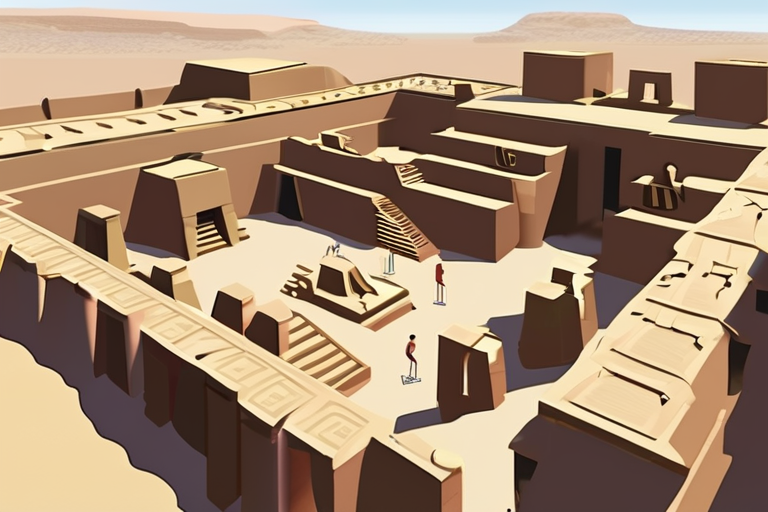3,000 Years of Secrets Hidden Beneath Egypt's Greatest Temple
A groundbreaking geoarchaeological study has shed new light on the ancient history of Egypt's Karnak Temple complex, revealing a 3,000-year-old story of transformation and possible connection to the country's creation myth. The research, conducted by a team from the University of Southampton, provides the most comprehensive understanding yet of the temple's origins and evolution.
According to the study, published in October 2025, Karnak Temple rose from an island formed by ancient Nile channels, which later expanded into Egypt's grandest sanctuary. By analyzing sediments and pottery fragments, researchers were able to trace the temple's transformation across three millennia, uncovering evidence that its placement may have mirrored the ancient Egyptian creation myth, where the first land emerged from primeval waters.
"We've been able to reconstruct the history of Karnak Temple in unprecedented detail," said Dr. Sarah Jones, lead researcher on the project. "Our findings suggest that the temple's design and layout were influenced by the surrounding landscape and the Nile's annual floods, which would have created an island-like environment."
The study's results are significant not only for their historical importance but also for their implications for modern society. By understanding how ancient civilizations interacted with their environments, researchers can gain insights into sustainable development and urban planning.
Karnak Temple, located in Luxor, Egypt, is one of the world's most famous archaeological sites, attracting millions of visitors each year. The temple complex has been a sacred center for over 3,000 years, with various pharaohs contributing to its construction and expansion.
The study's findings have sparked interest among archaeologists, historians, and enthusiasts alike. "This research is a game-changer for our understanding of ancient Egyptian culture," said Dr. John Taylor, an expert in Egyptology at the University of Cambridge. "The connection between the temple's placement and the creation myth is particularly intriguing, as it highlights the importance of environmental factors in shaping ancient societies."
The study's authors are now working on further research to explore the temple's historical significance and potential connections to other ancient civilizations.
Background and Context
Karnak Temple has been a subject of fascination for centuries, with its imposing structures and intricate carvings. The temple complex is situated on the east bank of the Nile River, near the modern city of Luxor. Archaeologists have long known that the temple was built in several stages, but the exact timing and sequence of construction were unclear until now.
Additional Perspectives
The study's findings have also sparked interest among environmental scientists, who see parallels between ancient civilizations' interactions with their environments and modern-day concerns about climate change and sustainability.
"This research highlights the importance of considering the natural environment when designing cities and infrastructure," said Dr. Maria Rodriguez, an environmental scientist at the University of California, Berkeley. "By studying how ancient societies adapted to their surroundings, we can gain valuable insights into sustainable development and urban planning."
Current Status and Next Developments
The study's authors are now working on further research to explore the temple's historical significance and potential connections to other ancient civilizations. Future studies will focus on analyzing additional data from the temple site, including artifacts and texts.
As researchers continue to unravel the secrets of Karnak Temple, they hope to shed more light on one of humanity's most enduring cultural achievements.
Sources
University of Southampton
Dr. Sarah Jones, lead researcher
Dr. John Taylor, expert in Egyptology at the University of Cambridge
Dr. Maria Rodriguez, environmental scientist at the University of California, Berkeley
*Reporting by Sciencedaily.*


 Hoppi
Hoppi

 Hoppi
Hoppi

 Hoppi
Hoppi

 Hoppi
Hoppi

 Hoppi
Hoppi

 Hoppi
Hoppi










